SPECIAL REPORT | Two years after the nation was rocked by severe pollution in Sungai Kim Kim, Johor, which endangered residents, concerns are now mounting as similar pressures are emerging around Sungai Langat, a source of drinking water in Selangor.
This river and its tributary, Sungai Semenyih, provide about 30 percent of the water supply in southern Klang Valley.
Like Sungai Kim Kim, Sungai Langat is facing immense pressure from increasing population and demands arising from development and industrialisation.
One of the sources of pollution is the effluents from factories in the Mahkota Industrial Park in Banting and other nearby industrial areas.
A visit to the river bank there found the factories are using the waterway to discharge their wastewater - which they say is treated - while sand mining is also being carried out upriver.
To top it off, vast areas along the river banks are being cleared for the construction of massive waste paper recycling factories, while other sections continue to be promoted for heavy industrial development, it was found.
Dark-coloured heavy matter
A visit along the river banks found leftovers of the industrial push in the late 20th century - standing monuments of ignorance and lack of enforcement.
Large heaps of industrial waste spread out over more than 60 acres can be seen just 50 metres from the river, exposed to the elements of nature. Once it rains, the industrial waste could be washed into the river.
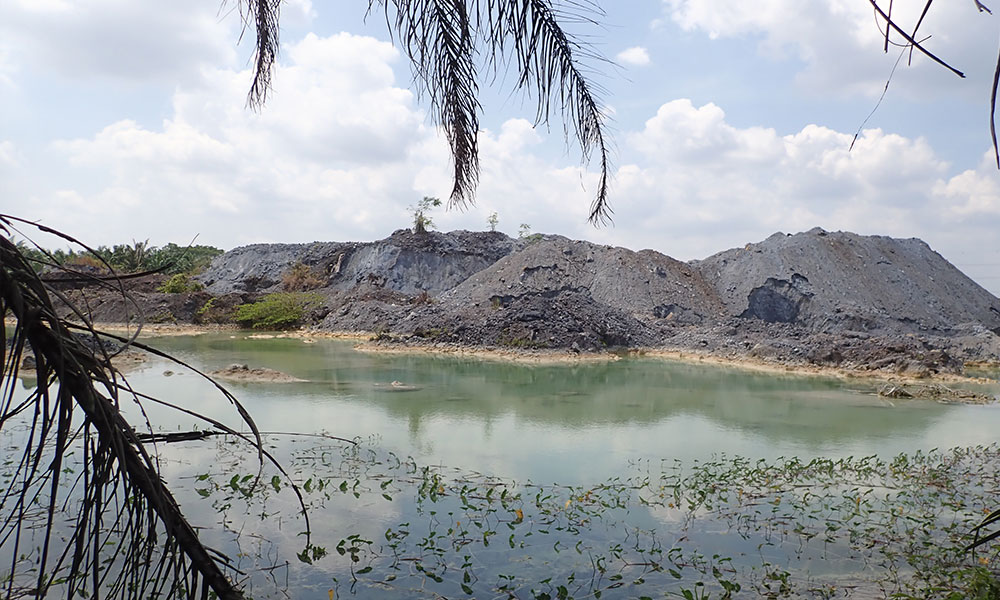
Recent laboratory tests conducted on the dark-coloured heavy matter waste revealed that it contained barium, zinc, copper and lead, possibly accumulated slag from former metal scrap processing activities in the area.
The origins of these heavy matter wastes remain a mystery. “These wastes have always been dumped here. We don’t know what they are,” said a local boatman who declined to be named.
Fishermen bemoan a dwindling fish population and reduced catch.
One fisherman, who spoke on condition of anonymity, said: “We used to catch big fish in the past. We could also catch huge freshwater prawns easily.
“But since the factories came more than 10 years ago, we haven’t seen prawns for many years. The fish are also smaller in size.
“In 2020, we suddenly saw prawns again. When it rains, the prawns become mabuk (drowsy) from the chemicals washed into the river from the factories.”
Maketab Mohamed, a former academic in the field and now a consultant for local environmental groups, agrees with the fishermen.
He carried out tests in April along the stretch of river near the dumpsite which revealed low oxygen levels in the water.
It is uncertain if the metallic waste dumped in the open violates any environmental laws. However, Maketab expressed worry over the mountains of dark matter that stretched across the river bank.
He urged caution given that the compounds are unknown, the particles that enter the river may contaminate the river life, posing a threat to recreational and inland fishermen.
Dumping site
In 2016, the now-defunct Megasteel that was operating in the area was convicted of three environment-related charges pertaining to the storage and disposal of toxic waste.
This metal waste dumping site is almost directly opposite the Labohan Dagang Water Treatment Plant. The newly-built plant processes potable water for some 30,000 households in Kuala Langat.
Local environmental group Persatuan Tindakan Alam Sekitar Kuala Langat (PTASKL) collected water samples at the intake point of the water treatment plant in early March.
Results show the amount of ammonia (3.12mg/L) and arsenic (0.014mg/L) at levels that have raised concern among Maketab and local residents.
Drinking water quality standards from the Health Ministry state that the maximum acceptable value of ammonia and arsenic should be 1.5mg/L and 0.01mg/L respectively.
Similarly, the World Health Organisation recommends a limit of 0.01mg/L for arsenic because of practical difficulties in removing arsenic from drinking water.
Wastewater discharged
Other concerning findings also emerged. More factories dealing with waste matter are being built in nearby areas along the river.
The group claims that at least one large waste paper factory has been operating downriver from the water treatment plant, running production without a Certificate of Completion and Compliance (CCC) for its premises from the Kuala Langat Municipal Council (MPKL).
However, when contacted, Best Eternity Recycle Technology (Bert) Sdn Bhd said it has received a trial approval by MPKL to operate, pending a CCC.
The Environmental Impact Assessment (EIA) report of the Bert factory shows that it will produce 2.2 million tonnes of paper products from imported waste paper annually.
This will inadvertently bring in mixed residual waste that cannot be recycled including plastics, which Bert said will be sent to the municipal landfills.
In the EIA report, it is stated that the residual waste will be burned in thermal treatment plants, which are yet to be in operation.
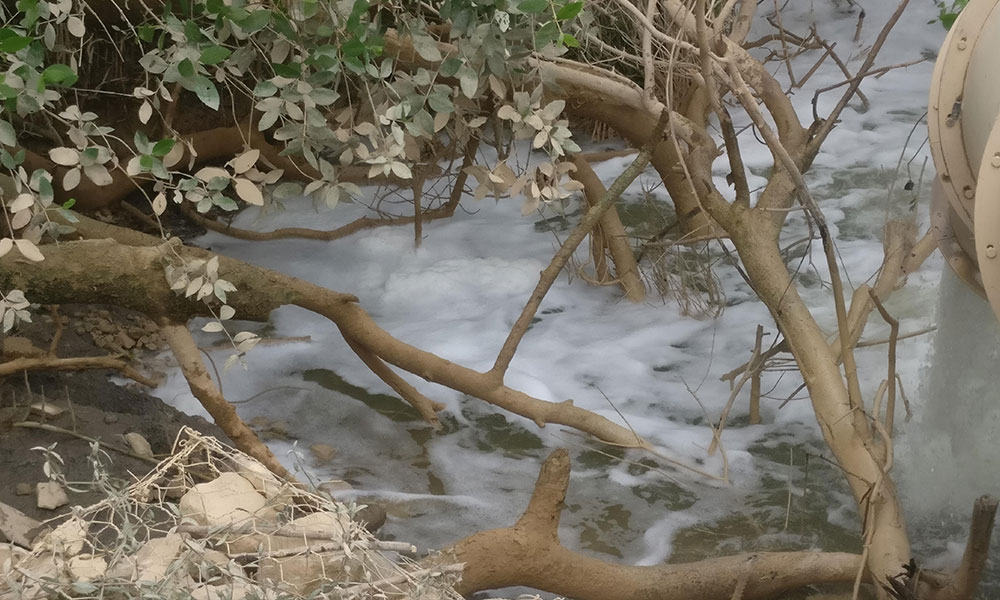
In full operation, 74.7 million litres per day of water will be drawn from the Sungai Langat for its paper recycling processes.
Meanwhile, the facility is authorised to discharge 62.4 million litres of treated wastewater into the Sungai Langat per day. This amount of wastewater could fill up 25 Olympic-sized swimming pools.
Bales of imported waste paper can be seen on the premises. Checks at the discharge point at various hours of the day and night showed high volumes of frothy water that smelt of chlorine.
Company taken to court twice
Case summaries on the Department of Environment’s (DOE) website show that the company was taken to court twice and was fined RM221,000 for offences committed in August 2019 over environmental violations, including for land works and construction without the approval of the Selangor DOE and failure to adhere to guidelines on land-disturbing pollution.
Despite the difficulties of enforcing environmental and safety guidelines, two other massive waste paper recycling factories are planned within a five-kilometre radius, all with on-site electricity generation through the burning of fuel, including coal and plastic waste.
Residents and experts are concerned about air pollution risks, and also the vast amounts of treated wastewater that will be released into the river by all three factories.
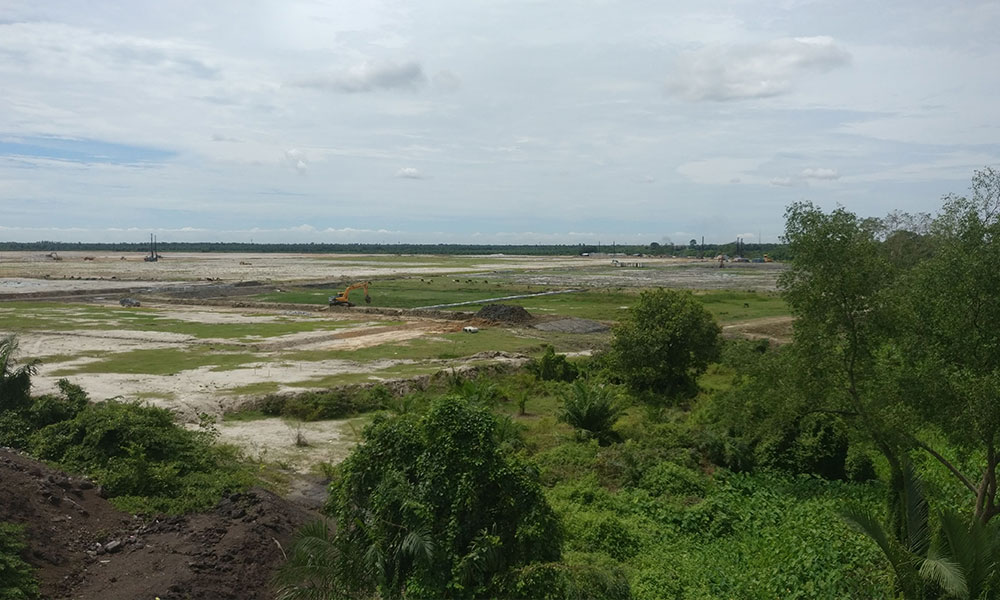
They argued that the drawing of large amounts of water from the river and the discharge of chemical compounds would cause the water quality and environment around Sungai Langat to further deteriorate.
While the factories are located downriver from the Labohan Dagang Water Treatment Plant, Maketab and local fishermen say that pollutants may be pushed upstream during unusually high tides as the area is an estuary.
“You can see that the rubbish doesn’t get flushed out to sea because of tidal effects. They go down the river during low tide and then come back in during high tide,” lamented one boatman.
Tests on samples
The concerns of the residents were not without basis.
Tests carried out on water samples taken by Malaysiakini at the factory’s discharge point in February revealed the samples did not meet the Environmental Quality (Sewage and Industrial Effluents) Regulations, under the Environmental Quality Act 1979.
Three parameters - oil and grease, phenol, and boron - exceeded the declared minimum standards for wastewater discharge (table below).
Tests by PTASKL last September on water samples from a floodwater retention pond, less than 100m from the factory boundaries, also found the presence of phenol, together with manganese, iron, and sulphide, which were above permissible levels (table below). These compounds are not expected in floodwaters.
“We believe that the factory was pumping not only human waste (but also these compounds) into the pond when the water turned black last year. We are very worried,” a PTASKL representative said.
Although regular inspections are said to be carried out by various government agencies, it is unclear if they have found similar results and taken necessary action.
When met through a virtual teleconference in late June, factory’s spokespersons insist none of its effluents are discharged into the pond, but are treated before being discharged into the river.
Factory spokespersons also said regular samples of its effluents are taken by the DOE, and all comply with set standards.
It also publishes monthly results from samples analysed by a third-party laboratory on a notice board outside the factory, they said.
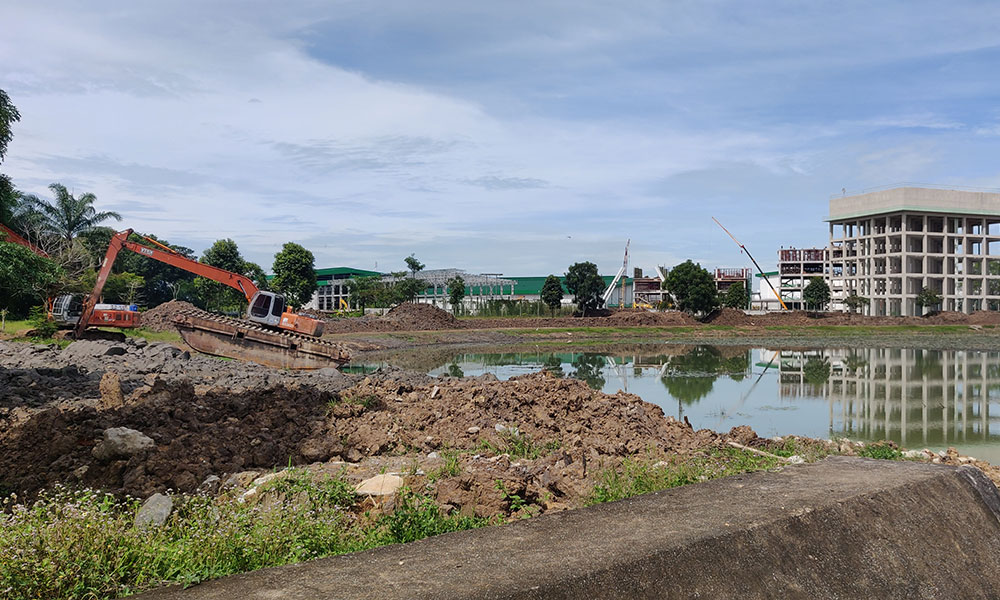
Similarly, Bert’s spokespersons said its EIA consultants had done analysis on the impact of the effluents at various tidal patterns, and the findings met DOE’s guidelines.
“I don’t have the expertise to answer (in detail) but I can say that our EIA report includes this information, which has been analysed by the DOE," Bert’s general manager PY Wong said at the teleconference meeting in June.
“If we don’t comply, I believe the DOE won’t grant us an approval letter.”
Wong was also taken aback by alleged findings of phenol in samples taken from the factory’s discharge point, but declined to comment further until he could be sure the samples were indeed from the factory’s discharge point.
To this end, Wong offered a site visit last month to show where the factory’s effluents are discharged into the river on condition that visiting journalists could show PCR (polymerase chain reaction) tests indicating they are Covid-19 negative.
However, Bert rescinded its offer at the last minute, citing Covid-19 movement restriction orders.
Unsatisfactory response
Concerns over the water quality and other issues spurred residents in the area - who joined forces with PTASKL to form a loose alliance named Gabungan Lestari Alam Kuala Langat (GlamKL) - to push for a dialogue session with MPKL, that was held in May.
The group’s spokespersons, Pua Lay Peng, Mohd Nazri Afrizal, and Suhaizam Mohd Kassim, also said they had submitted official complaint letters expressing their concerns to various government agencies, including Selangor Water Management Authority (Luas), DOE and the Selangor Menteri Besar's office.
They said they have not received any satisfactory response to requests for more substantive engagement with the government.
“We were invited to meet with MPKL, chaired by deputy president Mohd Azrul Hashim.
“At the end of the meeting, he gave us his email address and asked us to email him everything, which we did. He promised to look through our complaints and respond.
“Later that very same day, we found out that it was his last day as deputy president of MPKL. They are taking us for fools!” a GlamKL representative said.
GlamKL has also met officials from the factory, Luas and the DOE over allegedly discharged pipes spotted during construction to deepen the floodwaters retention pond.
Bert is said to have spent several thousands of ringgit on deepening the pond, despite not pumping its discharge there. It said this was part of its corporate social responsibility programme.
While the government and the factory claimed that all is above board, the residents were left dissatisfied with the obscure nature of the response they said they received.
The MPKL and DOE did not respond to Malaysiakini’s requests for more information.
However, in October, DOE directory-general Norlin Jaafar said investigations found black, foul-smelling water in the flood water pond was not effluent discharged by the Bert factory, but overflowing sewage from workers’ quarters.
To address this, the DOE instructed the factory to release stormwater into a large ditch to dilute the foul-smelling stagnant pond water, while the factory builds proper workers’ dorms within its compounds.
Norlin said the factory’s effluents were also sampled on Oct 17 and were found to be “clear and odourless”.
“The sample has been sent to the Chemistry Department for analysis to ensure compliance with the Environmental Quality (Industrial Effluents) Regulations 2009,” she said. - Mkini





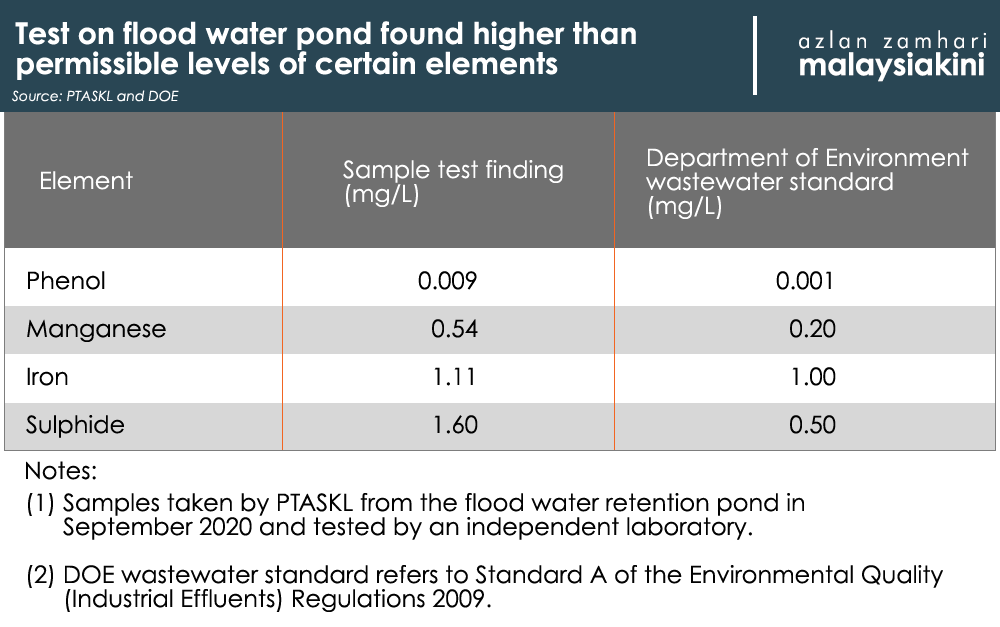
No comments:
Post a Comment
Note: Only a member of this blog may post a comment.